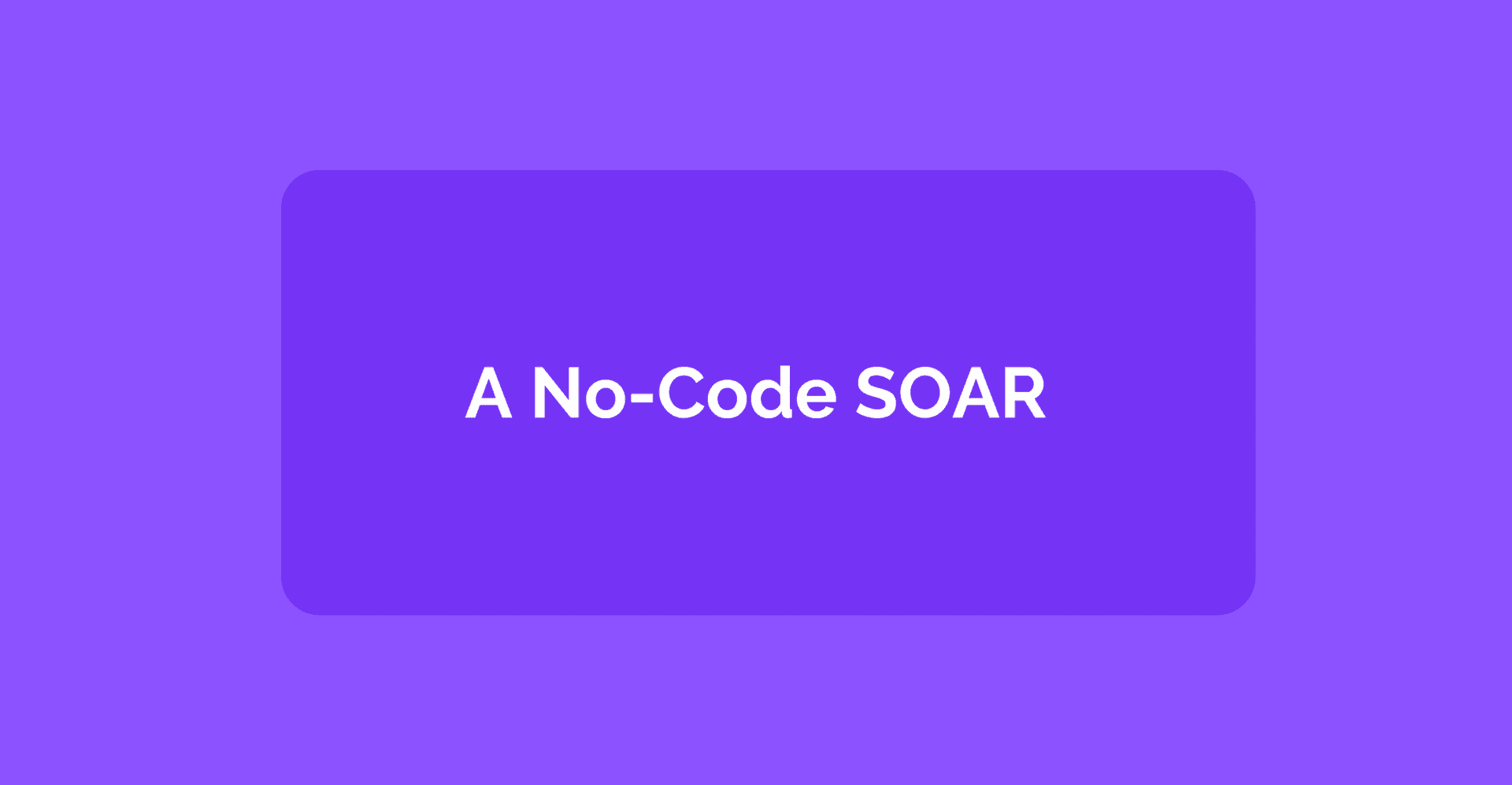Nov 2, 2021
Paul-Arthur
Jonville
No-code is about accessibility, about making something at first difficult easy. We believe that everything, if refined enough, can be made accessible. Think about operating systems and the way we've come since the seventies. Yesterday, you had to type lines of code in black consoles; only experts could do this adequately. Today, you can click on icons to launch many applications; everybody can do it.
Are the benefits purely aesthetic? They're much more than that. It's about accessibility. Lowering the skill barrier enables more people to use tools, increasing their overall productivity and creativity, qualitatively and quantitatively.
We believe that widening access to a given tool fosters innovation. The more people can use tools, the more chances you have to create a breakthrough. Confronting the diversity of talents and personalities creates a burgeoning pool of creativity. This is where ideas come from. Enclosure is the worst thing that could happen to innovation.
We give our best when we are given the tools we need. When tools are entirely appropriated, they deliver their maximum potential.
Accessibility and Creativity are essential in a fast-moving world. You need to constantly evolve to keep track and stay ahead of threats. Every resource available must be gathered around the project you're defending, and you need to adapt to be proactive.
What's the best way to foster such creativity regarding computers and software? No-code. It's about providing easy-to-use solutions for companies seeking to prosper in cyberspace, allowing them to be flexible and improve themselves efficiently. This is what no-code companies are doing when you think about website creation. With enough maturity and mastering, we can change things for the better:
Here, at Mindflow, we believe that cybersecurity should be made more accessible, that there is a way for no-code;
A way that could deliver at every scale;
People shouldn't consider this a simple toy; on the contrary, it's essential to help them face coming threats.
Cybersecurity is waiting for an accessibility revolution
Cybersecurity is one of the most important fields of our time. Think about every area in which cybersecurity is involved today. From the nuclear reactor to your granddad's pacemaker, there are flows of data and a diversity of devices that need to be secured.
Is this the final state of cyberspace? No, it's just the beginning. We're growing more and more dependent on cyberspace every day. Tomorrow will see the rise of Web 3.0, where IoT will be at the center of societies: autonomous vehicles on a mass scale, hospitals or entire cities traffic will be managed by algorithms, fleets of drones will deliver packages directly to your house, and so on.
So, following cyberspace's rise, will cybersecurity grow as well? We can count on our right-hand fields where we don't rely on cybersecurity. That isn't very comforting when you think about it. But, even today, most activities rely - to some extent - on cyberspace and are de facto vulnerable. Have a look at hospitals, pipelines, meat industry. All of these were victims of cyber attacks in 2021. Some have blocked petrol's routing or severely disturbed their functioning, and I'm only talking about the attacks in 2021.
Now, we must ask ourselves how to keep track of this growing field. More humans behind computers? We've already said that cyber professionals are scarce and that cybersecurity's skill barrier is high. So, should we fight these structural deficiencies or lower the barrier? Do you want to keep already overworked teams under labor-intensive tasks (a precarious state described multiple times by the media) with the risk of high turnover? No, there's another way to deal with it.
With no code, we are providing this another way. We don't think that your cyber operations teams are deemed to work in a tedious environment where they need to write lines of code for each task, even the most repetitive and low-value-added ones. No, there's no reason to think that cybersecurity should remain a closed field where work should remain tedious.
No code is just another layer of abstraction added to the pile of computer programming languages in the answer we're providing. No code sits over the scripting and interpreted languages, which are already on top of another less abstract language and are supposed to ease the human-machine dialogue. We can't think of programming languages as a finite field because it's already the result of different abstractions. Each layer, from assembly to interpretation of languages, aims to ease and speed up the way dialogues are conducted. We're adding the last block on top of this pyramid.
We're making a product that both developers and non-developers can use. Why? Because we think that it is how things evolve for the better. When access is broadened, creativity is empowered by the variety of people bringing their talents and differences to the task.
What does Nocode bring to cybersecurity?
Typically, no-code brings some advantages to the usual company. Most of all, no code enables non-developers to materialize their ideas without an intermediary, which enhances their creativity. Figure the average start-up willing to create an app for a given service. Yesterday, it would have taken a whole team of engineers and a year to reach a viable product, minus the aesthetics.
Thanks to no-code engines, entrepreneurs can build apps from scratch within weeks. This is an extraordinary leap of creativity. Can this apply to cybersecurity? Yes, to some extent. When your analysts want to automate a workflow, for instance, in this case, instead of writing lines of code to create a workflow step that will call service from a product, your analyst can select the API preformatted, drag it, and drop it in his workflow.
What is this workflow for? Automating a particular task. Yes, no-code is prone to automation made simple at scale. Just build the workflow and toggle its automation. Nothing more. Think of managing the containment of potential ransomware or worms. Time-machine speed is required to quarantine and limit the damages. Automatic triggering and response are of absolute necessity when containing such attacks.
Providing a visually accessible platform would help engineers and analysts from different teams understand what's happening in minutes. Which services are you calling to manage a user offboarding or share the data collected in threat intelligence to triage databases, for instance?
All in all, it will most certainly help your analysts and teams cooperate. As we showed about the fusion center, collaboration in and out of your company is crucial to establishing a proactive defense. We can't have a passive defense stance anymore. The threats are growing too big and too dangerous. The one solution to rise against them is to defend forward. To achieve this, we need to use all the tools at our disposal: automation, creativity, and communication, to name just a few.
What's happening here? A tremendous increase in productivity, as well as a lowered skill barrier. No-code answers some of the most complicated challenges cyber professionals face: chronic human and skill shortages plus budget efficiency.
No-code is essential
Bear in mind that we're not saying that coding is over. There will always be code behind the software. However, we think we've reached a state of maturity sufficient to add a layer of simplified semantics to the coding one.
We're doing this because, as we said above, we believe in the need for accessibility in cybersecurity. It cannot stay a closed field as we thought many other areas were until their accessibility was broadened. Only when such a revolution happened did these products deliver their maximum potential.
Consequently, no, No-code is not a toy, absolutely not. It's a way to evolve and create more, create better.
Also, given its advantages, it is one of the main assets you have at your disposal to face this increasingly hostile environment.
Tomorrow's world will evolve in a particular space more than ever before in its history. Can we ensure maximum security for our data while the cybersecurity field struggles to keep its workers or stay ahead of the threat? No, we need to widen the pool of creation, ease the work required, and allow people to do more.
Further, consider the variety of companies needing to secure themselves. Nobody can think that they will be safe from attacks since almost everybody partially relies on cyberspace for their ordinary tasks. Consider the cloud, for instance. How many companies are migrating to it? Or even the growth of endpoint devices.
To that end, we believe that adding this no-code layer is indispensable to helping companies, from small businesses to larger ones, keep up in this new world. Nocode means lowering the skill barrier and increasing the productivity of your teams. It also means less cost to deploy an automated and more secure strategy for your company.
Everyone can adopt no-code, and everyone can benefit from it.







